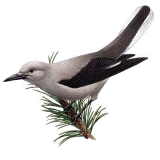Papers in the Biological Sciences
Document Type
Article
Date of this Version
1988
Abstract
Optimal diet theory predicts choices among prey types. With sequential prey encounters, less profitable prey types may be rejected immediately because rejecting the prey item at hand increases the probability of encountering more profitable types. However, Lucas (1985) argued that at the end of a foraging bout, all encountered prey types should be accepted because the opportunity to encounter more profitable types is limited. We tested Lucas’s prediction in a simulation, allowing blue jays to hunt for two moth types differing in profitability. During the last min of both 10- and 20-min foraging bouts, the less profitable type was attacked more often than during the middle of the bouts; this is an end-of-the-bout effect. The less profitable type was also attacked more often at the beginning of the bouts; this is probably a sampling effect. Jays appear to integrate information about time spent foraging with information about relative prey profitability.



Comments
Published in Journal of Comparative Psychology 102:3 (1988), pp. 230–235; doi: 10.1037/0735-7036.102.3.230 Copyright © 1988 American Psychological Association. Used by permission